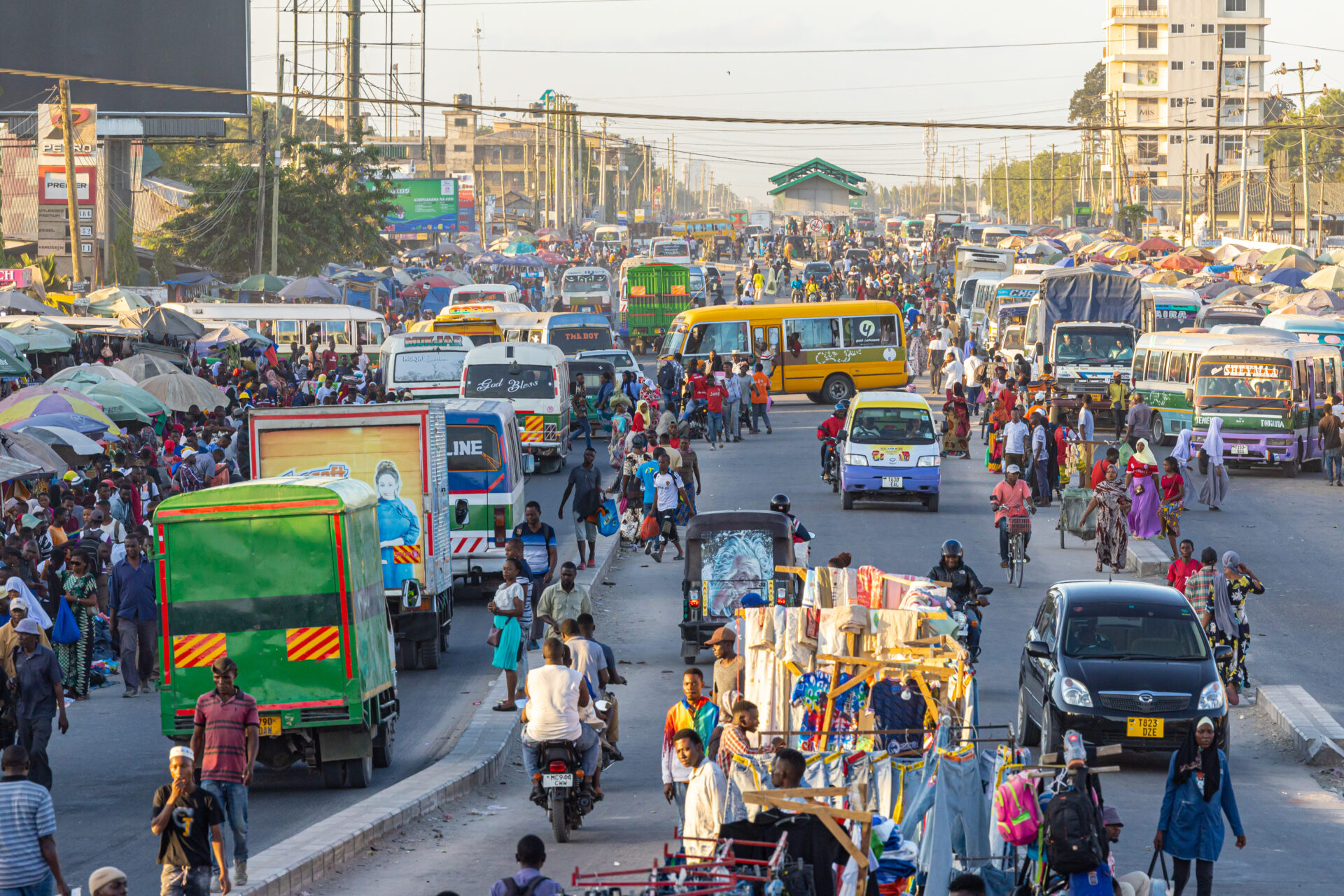Tanzania at a Crossroads
Written by Marian Starkey | Published: June 10, 2024
In the search for a feature article detailing the population challenges Tanzania faces, I found none better than the one that follows from The Guardian, written to mark the 8 billion milestone on November 15, 2022. The author, Kenyan journalist Caroline Kimeu, is the Guardian’s East Africa Global Development Correspondent, based in Nairobi. She captures the vibrancy of Tanzania’s largest city, Dar es Salaam, while conveying the struggles of its residents, many of whom — especially the city’s poorest — suffer from crowding, pollution, scarce resources, and barriers to economic mobility.
Tanzanian newspapers describe the country’s population growth rate as “mind-blowing” and “staggering,” and warn of the need to increase investment in agriculture to accommodate the “rapid population explosion.” Business Insider Africa writes, “Tanzania faces the risk of crumbling under the weight of its population,” and “By 2050, the country could be overpopulated.”
Samia Suluhu Hassan, President of Tanzania, has been outspoken about her country’s rapid population growth and its repercussions for “allocating resources and delivering social services.” She supports increasing access to contraception, in direct opposition to her predecessor, the late John Magufuli, who caused a stir in 2018 when he said the following at a rally: “Women can now give up contraceptive methods. … Those going for family planning are lazy … they are afraid they will not be able to feed their children. They do not want to work hard to feed a large family and that is why they opt for birth controls and end up with one or two children only.” Critics were quick to point out that Magufuli was the father of “only” two children.
Speaking at the Africa Human Capital Summit in July 2023, President Hassan said, “There is no better time to deliberate on the human capital issue than now… we must set clear priorities in family planning and sexual reproductive health education among the youth.” Her Minister of State in the President’s Office of Planning and Investment, Professor Kitila Mkumbo, said at the launch of the World Bank report that inspired this issue of the magazine, “Our government is once again prioritizing family and reproductive health education programs. We were once champions of family planning on this continent, and we are going back to that level.”
As stated in its country commitment for FP2030, the global partnership to improve access to family planning, “The government of Tanzania is committing to continuously improving family planning services so that more women and girls can make their own decisions on their fertility intentions.” Goals identified in the commitment include increasing contraceptive prevalence among adolescents, specifically, and among all women, more broadly; addressing gender and social norms that impede family planning use; and increasing family planning appropriations in the Tanzanian federal budget.
As the largest donor to international family planning efforts, the United States has an important role to play in the realization of Tanzania’s FP2030 commitments. On its website, USAID has information about the agency’s investment priorities in Tanzania, and family planning and population growth are discussed not only in the global health section, but also on pages about economic growth and livelihoods, biodiversity, and natural disasters. A USAID fact sheet on family planning and reproductive health begins:
Family planning is key to Tanzania’s broad-based development, saves lives by helping reduce maternal morbidity and mortality, and increases newborn and child survival rates. The Government of Tanzania recognizes the need to address rapid population growth; however, shortages in funding, human resources, and private sector engagement remain a challenge. High prevalence of adolescent pregnancy is also an issue, and while modern contraceptive use has grown in recent years, there has been limited change in the country’s unmet need for family planning.
The U.S. Fiscal Year 2024 budget was finally finalized in late March, and bilateral funding for international “family planning/reproductive health, including in areas where population growth threatens biodiversity or endangered species” is holding steady at the same level as last year — and for over a dozen years before that — at $575 million (the U.S. contribution to UNFPA is remaining the same as well, at $32.5 million). In this political climate, flat funding is a victory, but the U.S. fair share of what’s needed to satisfy all demand for international family planning (met and unmet) is $1.74 billion — nearly three times higher than our actual contribution.
Read the feature article here. In the print version of the magazine, this forward precedes the article by Caroline Kimeu of The Guardian.

